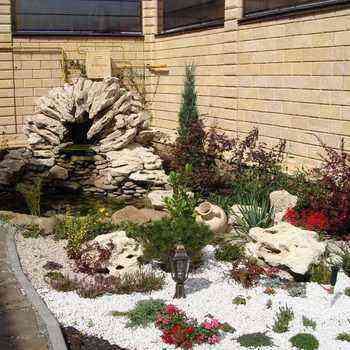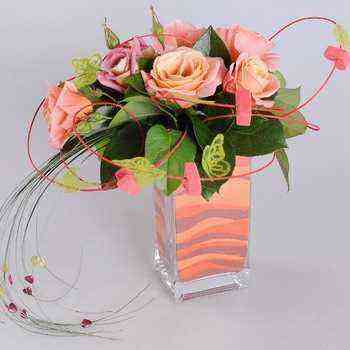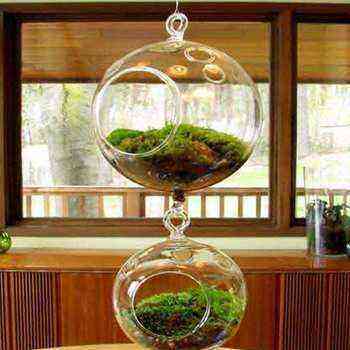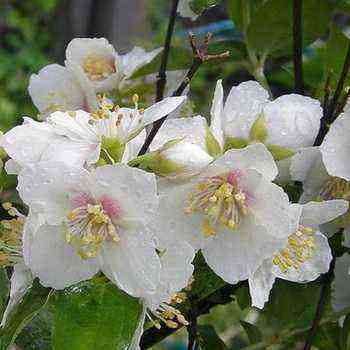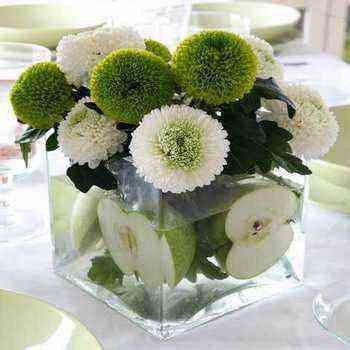 Color science is a science that includes knowledge about the nature of color, primary, composite and complementary colors, basic color characteristics, color contrasts, color mixing, coloration, color harmony, color language, color harmony and color culture.
Color science is a science that includes knowledge about the nature of color, primary, composite and complementary colors, basic color characteristics, color contrasts, color mixing, coloration, color harmony, color language, color harmony and color culture.
Knowledge of the basic concepts, laws and regulations of color science is simply necessary for a person engaged in any art, because this science not only studies theory, which is undoubtedly very important, but also has a practical artistic application.
Color sensation
How did this theory come about, and how did people manage to find a complete correspondence between the colors of light and pigments?
One or another color is “assigned” by a person to objects in the process of their visual perception. The perception of color can partially change depending on the psychophysiological state of the observer, for example, increase in dangerous situations, decrease with fatigue.
Color science is based on color sensation. In the overwhelming majority of cases, it occurs as a result of exposure to the eye of fluxes of electromagnetic radiation from the wavelength range in which this radiation is perceived by the eye (visible range – wavelengths from 380 to 760 nm). Sometimes a color sensation arises without the effect of a radiant flux on the eye – upon pressure on the eyeball, impact, electrical irritation, etc., as well as by mental association with other sensations – sound, heat, etc., as a result of the work of the imagination.
Different color sensations are caused by differently colored objects, their differently illuminated areas, as well as light sources and the lighting they create. In this case, the perception of colors can differ (even with the same relative spectral composition of radiation fluxes), depending on whether radiation enters the eye from light sources or non-self-luminous objects. In human language, however, the same terms are used to refer to the color of different types of objects. The main share of objects that cause color sensations are non-self-luminous bodies that only reflect or transmit light emitted by sources. In the general case, the color of an object is determined by the following factors: its color and surface properties, the optical properties of light sources and the medium through which light propagates, the properties of the visual analyzer, and the characteristics of the still insufficiently studied psychophysiological process of processing visual impressions in the brain centers.
Primary and secondary colors
Isaac Newton was the first to prove that color is white light. He managed to decompose the sunshine candles into different colors of the spectrum, passing a white sunbeam through a crystal three-sided prism. After proving that color is light, the solar spectrum can be derived from light, it was found that the solar spectrum contains all the colors of nature.
Another English scientist Thomas Young at the beginning of the XX century. conducted an experiment with lanterns, projecting six lanterns of the color of the spectrum onto a white wall. He managed to get a white color, confirming the results of Newton’s experiment. Continuing his experience, Young began to change colors and exclude some of them. As a result, it turned out that the six colors of the spectrum can be reduced to three primary primary colors. Young discovered that only three colors – red, green, dark blue – can recreate white light.
Young’s discovery, according to which all shades are obtained from only three colors, helps to understand the nature of primary colors.
If all colors can be decomposed into dark blue, green and red, they should be the three primary colors. But the scientist continued to experiment. Having received white light from three colors, he then discovered that by projecting a green beam onto a red one, yellow could be obtained. Projecting blue to red produces purple, and dark blue to green produces cyan.
As a result, these colors are considered complementary.
The ego is due to the fact that in nature, when light hits an object, it reflects all or part of the colors derived from the light.
A white object, like everything else, receives rays of light (red, green and blue), but refracts them, creating white light out of three.
In a black object, the opposite happens: it absorbs three light colors, leaving the object without light, which is why we see it black.
A yellow object receives rays of light (red, green, and blue), absorbs blue, and reflects red and green, which is why we see yellow, as a red ray added to green doubles the amount of light and produces a brighter yellow ray. This phenomenon is called additive mixing (synthesis). At the same time, light “paints” by combining colors, and the addition of three primary colors produces white.
But when we paint, we do not use light, we cannot get a yellow pigment by mixing red and green. Artistic mixes always require subtraction of light. This phenomenon is called subtractive synthesis, when the mixing of pigment colors leads to the exclusion of light. When carmine and yellow are mixed, the result is a darker color – red. Mixing the three primary pigment colors produces black.
As a consequence, in the art of painting, the main color pigments should be lighter than the main colored light rays.
At the same time, artists use the six colors of the spectrum as basic, when the shades of some colors change in relation to others. In painting, additional light colors are the main ones and vice versa.
By mixing the main color pigments in pairs, we get additional colors:
- Dark blue when mixing cyan and purple
- Green when mixing blue and yellow
- Red when mixing yellow and purple
When complementary colors are mixed with the main colors, tertiary colors are obtained: light green, orange, purple, carmine, emerald green, ultramarine.
Thus, the color wheel, which is the basis of color science, contains only 12 colors. However, if you continue to mix tertiary colors with primary and secondary colors, you will get a new series of 12 colors. If you continue this process, you can get an infinite number of shades.
There are certain patterns within the color wheel. First, according to the theory of color science, the primary and secondary colors located next to each other mutually reinforce each other, and secondly, the colors located next to each other in the chromatic circle transfer part of their color to the neighboring color.
Therefore, such an important conclusion can be drawn on the theory of color in its practical application in the art of painting: the complete correspondence between the colors of light and pigments allows the artist to create the effect of natural light by simply mixing three primary colors: yellow, purple and blue.
Another conclusion, no less important, relates to the so-called “complementary” colors. Thus, yellow is complementary for dark blue, magenta for green, cyan for red, and vice versa.
The color wheel indicates that all colors are opposite their complementary ones. Knowing this and using the large circle that shows tertiary colors, you can set additional ones. In this case, mixing two additional ones will give black.
Complementary colors are used in different situations. First of all, they create color contrasts. If you put a color scheme next to its complementary, for example, yellow versus dark blue, you get an extraordinary contrast. Knowledge of complementary colors is very important for an artist and allows for a wide range of painting.
In good works of art, there is a harmony of colors and shades, which is mainly created by the artist. In part, of course, this harmony is provided by nature, the natural colors that the artist writes with, and the behavior of lighting. But the artist’s task is to emphasize or change the nature in his work, to choose a palette with the dominant shades and colors necessary for the plot.
Warm, cool and neutral colors
Conventionally, the entire range of colors studied in color science is divided into warm, cold and neutral.
The range of warm colors tends to be ocher-sienna-red and is made up of the following colors in the spectrum: greenish yellow, yellow, orange, scarlet, magenta, violet and their derivatives.
The range of cool colors tends to be greenish-lilac and mainly consists of the following colors: greenish yellow, green, blue, aquamarine and purple alongside their variants.
A range of neutral (muted or grayish) colors. The main characteristic of this series is the gravitation towards gray. Dirty gray colors dominate whether they are warm or cold. This range is mainly a mixture of complementary colors and white. Almost all colors of the spectrum can participate in the composition of such colors, but mixing additional ones gives a muted character.
One of the signs that characterize color is saturation. The most saturated are the colors of the spectrum. Unsaturated colors in everyday life are called pale: pale pink, pale blue, pale lilac.
Another characteristic of color is brightness. Depending on the brightness, the colors are called dark or light, for example, dark crimson, dark red, light green, light beige. Colors that are both light and dark at the same time are most often rated as “dirty”. The most “pure” colors are those that have the highest possible lightness.
Lightness of color – the quality of color perceived by a person, identical in brightness to one of the gray levels; relative brightness, characterized by the reflectance.
Color plays a big role in body art. With the help of color, you can depict light and shadow, bulges and concavities, volume, shape, perspective, and even luminous objects. The schematic perception of colors is most often the reason why the drawing looks unnatural. In the science of color, white, gray and black colors are usually called achromatic (colorless), all the rest are chromatic (colored).
At the same time, it is not enough to know the basics of color science and be able to compose the desired color from the existing set of paints, you also need to put it in the right place. Very often it turns out that by picking up beautiful, bright colors and putting them on the base, the novice artist does not get the intended color effect. This is because the conditions of the color composition are not taken into account.
Color composition
Color composition is a combination of color spots on a plane, in space, organized in a certain pattern and designed for aesthetic perception.
There are four types of color compositions:
- Monochromia is built on one chromatic color
- Polar – in two contrasting or complementary colors
- Tricolor – three chromatic colors are the main
- Multicolor is based on four or more colors.
Human vision is arranged in such a way that the nearby color spots of the eyes automatically mix and as a result paints, which are beautiful in themselves, are mixed in the viewer’s perception, a gray spot is obtained, which would be obtained if we actually mixed these paints. You also need to remember that any object has the ability to reflect or absorb color shades of nearby objects, that two objects of different colors on the same background may look different. All these points must be taken into account when drawing up a color composition.
And finally, the color composition determines the arrangement of objects in relation to each other, taking into account their color, shape, spatial arrangement, hue saturation and color brightness.
In addition to the physical foundations of color science, the theory of color mixing and the use of cold and warm tones, the artist must be able to understand the characteristics of color, such as hue, saturation, lightness. Knowledge and skills in the application of the theory of color contrasts, systematization of color in harmony, physical, psychological and optical effects of color, colorist, technique of lightening and darkening are also important. With their help, the artist sculpts volume, creating the illusion of a three-dimensional world. For example, in face art, a face is modeled using light tones in order to concretize its shapes and details and change them if necessary. It should be well understood and firmly known that dark tones of paints narrow, deepen, move away the object, and light ones – expand, increase, bring it closer. Therefore, everything that they want to make visible or optically reduce is covered with a layer of dark tone. On details that have small proportions, they look small in size, apply a light tone. For example, a snub nose or a concave chin will appear even smaller if protonated with dark paint.
Now you know what is called color science, you have an idea of the basics of color and composition, which means you can start creating!
